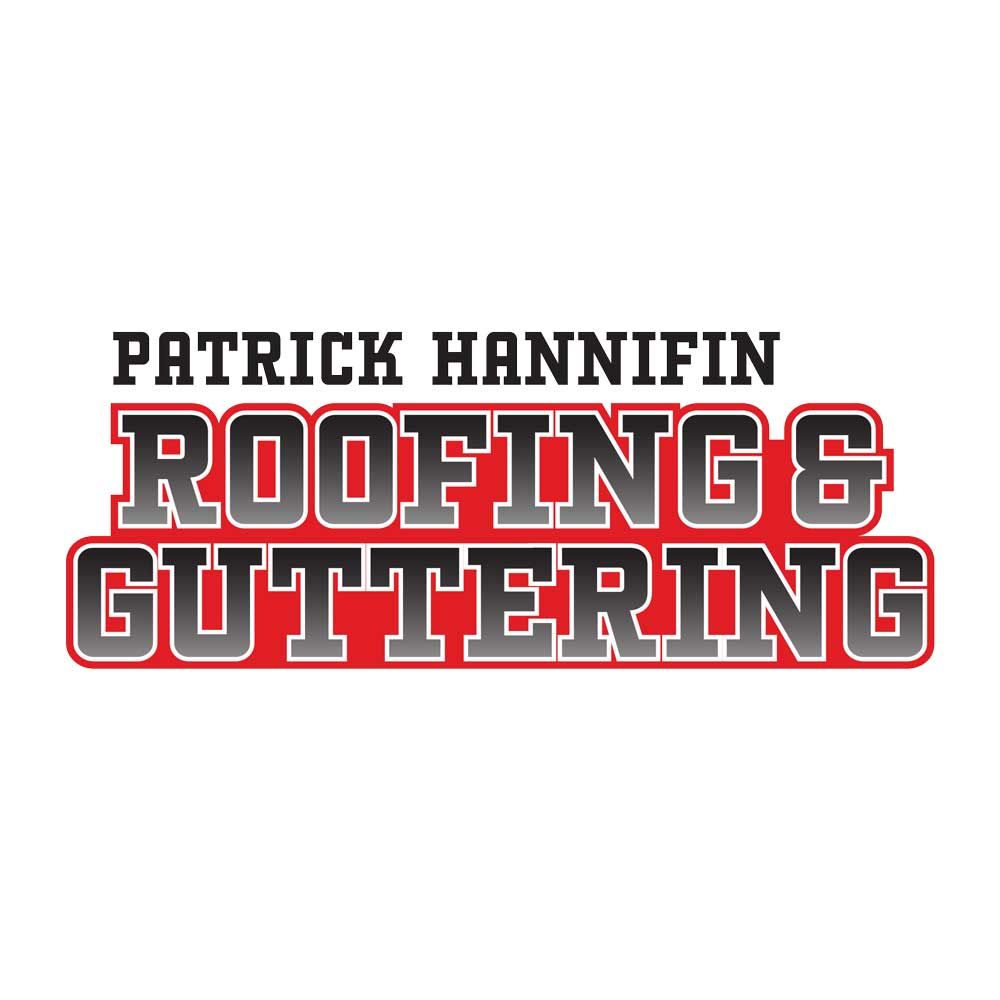Roofing Blog
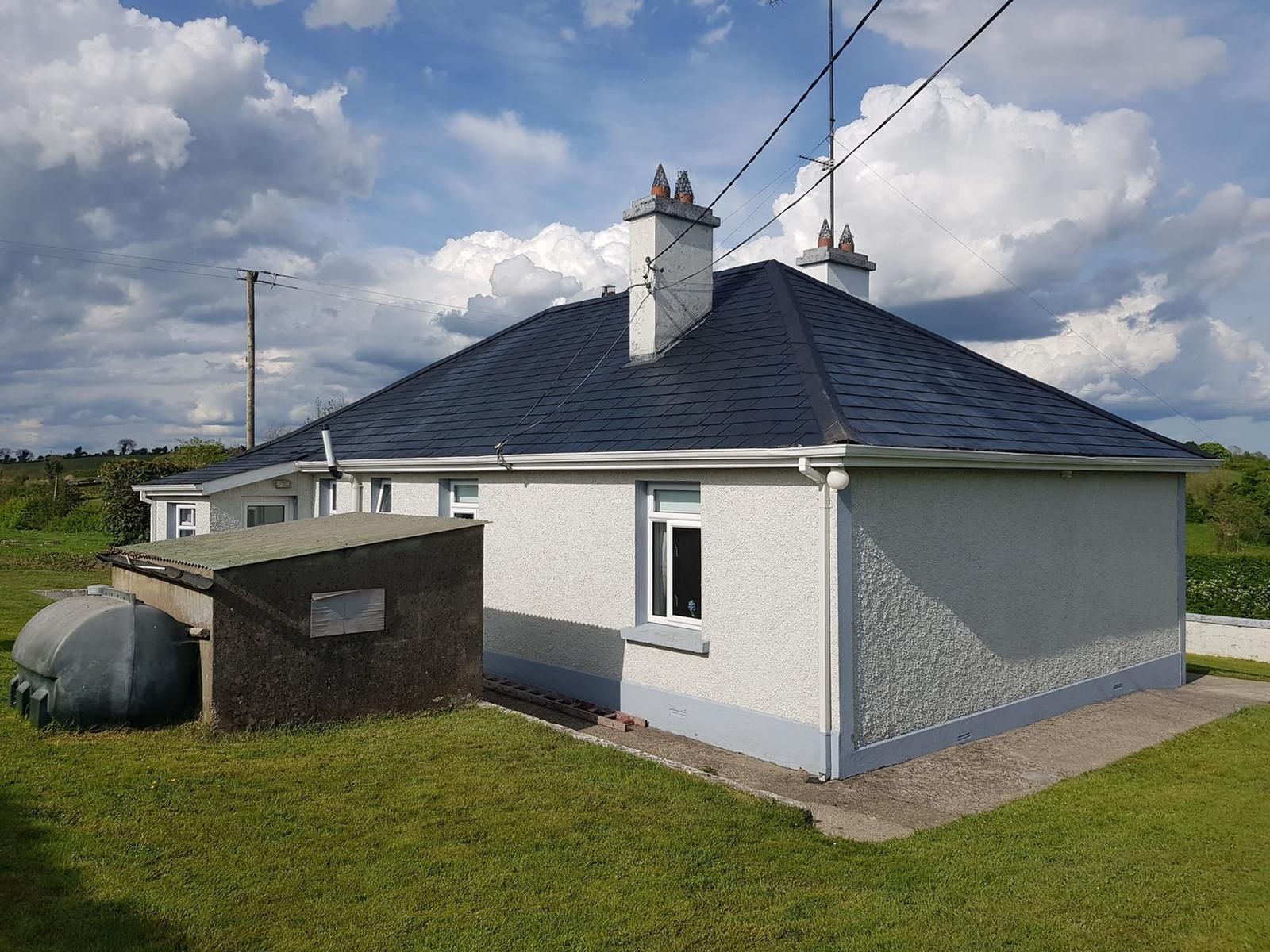
When people think of roof care, they usually focus on repairs or replacements. But there’s another important service that can extend the life of your roof while also improving the look of your home—roof painting and protective coatings. Especially in Ireland, where roofs take a beating from rain, wind, and UV rays, roof coatings can make a real difference. Roof painting isn’t just about appearance. While a freshly painted roof does improve kerb appeal, the real value lies in the protection it provides. A high-quality roof coating can seal porous surfaces, reduce the growth of moss and algae, and provide a waterproof barrier that prevents water ingress. This is especially beneficial for older concrete tile roofs, which become more porous over time. As water is absorbed, it can lead to frost damage, cracking, and eventual leaks. A breathable coating helps shed rainwater and protects against freeze-thaw cycles. Reflective roof coatings also help reduce heat absorption. While this is more of a concern in warmer countries, in parts of Ireland where summer temperatures can still rise, it offers added energy efficiency—especially for converted attics or upper rooms. The process usually begins with a full roof clean to remove moss, algae, and dirt. This is followed by a thorough inspection to identify any tiles that need replacing or areas that require resealing. Once prepared, the coating is applied—either by brush, roller, or spray—depending on the material and layout of your roof. There are several types of protective coatings available, including acrylic-based, silicone, and polymer formulations. Some include anti-fungal properties to help prevent regrowth of moss and algae, while others focus on durability and waterproofing. At Patrick Hannifin Roofing, we offer roof painting and coating services using premium-grade materials. Whether you want to refresh the appearance of your home, protect an ageing roof, or prevent future issues, we tailor the coating system to suit your roof type and condition. Roof painting is not a DIY job. The process requires safety precautions, access equipment, and technical knowledge to ensure proper adhesion and full coverage. With our expertise, you’ll get a long-lasting finish that enhances both performance and appearance.

Fascia and soffits aren’t just decorative trim along the roofline—they play an essential role in protecting your home from water damage, pests, and poor ventilation. Despite their importance, these elements are often neglected until obvious signs of damage appear. At Patrick Hannifin Roofing, we regularly carry out fascia and soffit repairs across Ireland, and we’ve seen first-hand how crucial this part of the roofline is. Let’s start with the basics. The fascia is the long, straight board that runs along the edge of your roof. It supports the bottom row of tiles and holds the guttering in place. The soffit is the board underneath the fascia, running horizontally from the edge of the roof to the wall. Together, they form a protective barrier that keeps moisture out and allows air to circulate through the roof space. When fascia or soffits are damaged—whether by water, rot, age, or pests—it compromises the entire roofline system. If the fascia board weakens, your gutters can sag or detach, causing water to pour onto walls and foundations. If the soffits are cracked or poorly ventilated, air can’t circulate properly in the attic, which leads to dampness and mould. In Ireland’s damp climate, these problems are common. Wooden fascia boards are particularly vulnerable to rot if gutters overflow or water penetrates the joints. Modern uPVC alternatives are more durable, but they’re still susceptible to cracks or impact damage over time. Another issue we often see is pest intrusion. Birds, insects, and even rodents can find their way into attic spaces through broken soffits or poorly sealed gaps. Once inside, they can damage insulation, wiring, and wooden supports. The good news is that timely fascia and soffit repairs can prevent all of this. At Patrick Hannifin Roofing, we offer full roofline inspections and repairs. Whether your boards need resealing, repainting, or complete replacement, we ensure your home remains protected and well-ventilated. If you've noticed peeling paint, damp around the roof edges, sagging gutters, or animals nesting in the eaves, it’s time to book an inspection. Small repairs now can save you major structural problems later.
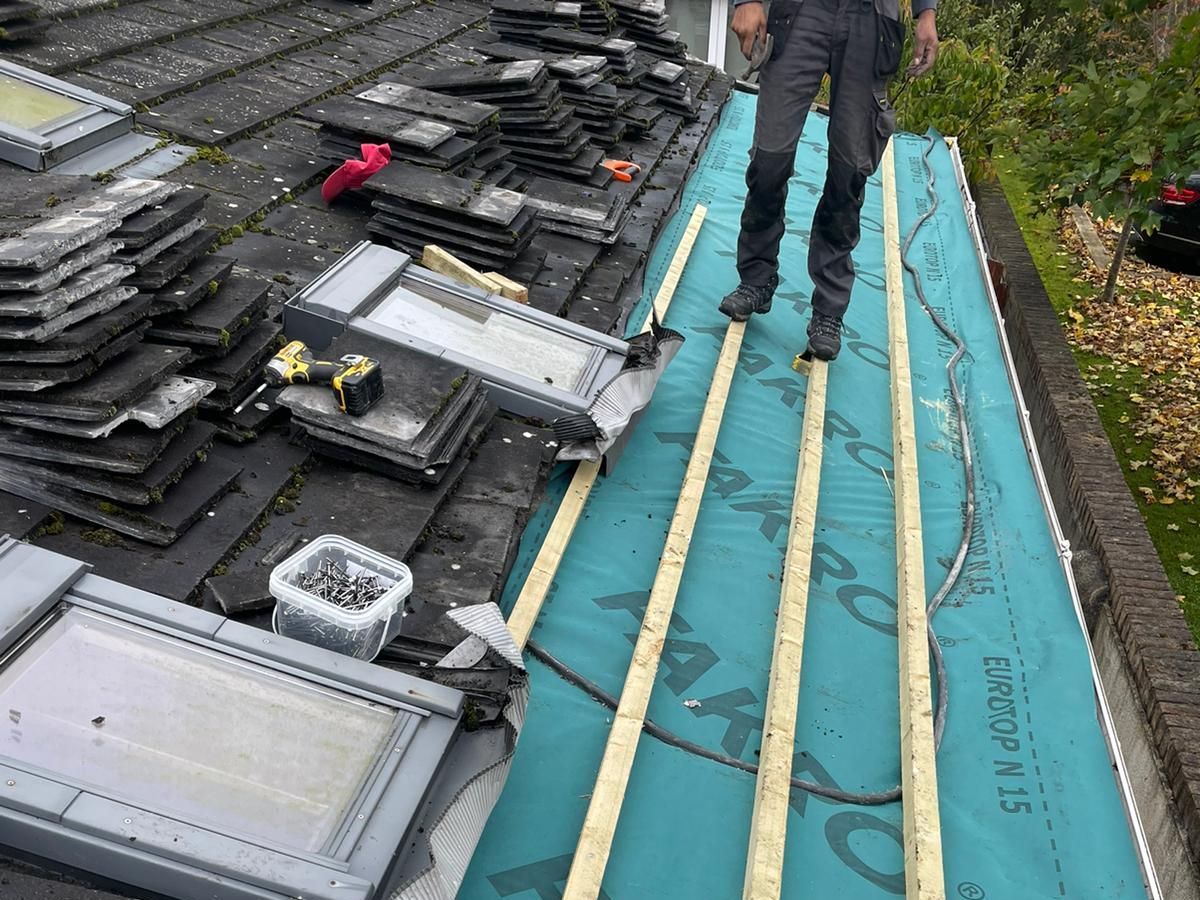
It’s just a small leak—only a bit of water after a heavy rain. Maybe it’s not even dripping anymore. You tell yourself it can wait until next month. But in roofing, small leaks never stay small for long. One of the biggest mistakes Irish homeowners make is underestimating the seriousness of a minor roof leak. What seems like a harmless drip today can turn into significant structural damage tomorrow. Roof leaks often start out as slow, steady intrusions—barely noticeable at first. But water doesn’t just disappear. It seeps deeper into timber, insulation, and internal ceilings. Over time, the damage becomes more widespread and expensive to repair. When left untreated, water can rot wooden roof beams, encourage mould growth, and weaken the overall structure of your roof. You may even notice damage to internal walls, ceilings, or electrical wiring. Repairing those areas will cost far more than fixing the original leak. Many homeowners in Ireland put off leak repairs due to cost or convenience, especially during wet months. But ironically, the longer you delay, the more expensive the repair becomes. What might have been a simple job—like resealing flashing or replacing a tile—can quickly escalate into full roof replacements, timber treatment, or internal plasterwork. Aside from structural damage, there's also the impact on your health. Persistent dampness in your home increases the risk of mould, which can cause respiratory issues, especially in children or the elderly. The longer the water has to travel, the harder it becomes to find the source. By the time a leak shows up on your ceiling, it may have started on the other side of the roof. At Patrick Hannifin Roofing, we often find customers surprised by how far water has travelled before becoming visible indoors. We recommend addressing leaks immediately—whether it’s a cracked tile, lifted flashing, or a minor hole in the roof membrane. Our team provides prompt, professional roof leak repairs throughout Ireland, ensuring your home stays dry, secure, and protected.
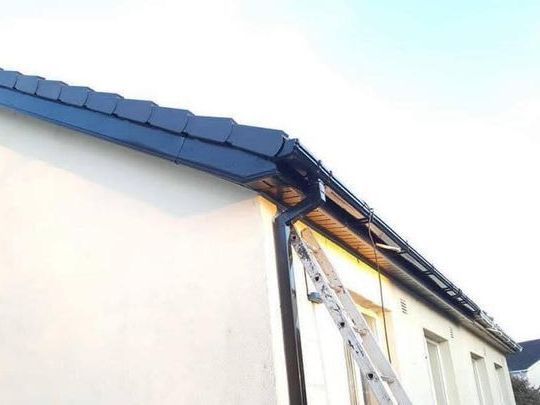
Your guttering system plays a crucial role in directing rainwater away from your home’s walls, foundation, and roofline. When it’s working well, you barely notice it—but when something goes wrong, the consequences can be severe. From water damage to roof leaks and even foundation issues, failing gutters are not something to ignore. So how do you know when your guttering system is in trouble? One of the clearest signs is water spilling over the sides during rainfall. This usually means a blockage in the gutters or downpipes, causing water to overflow rather than drain properly. You might also see staining on the external walls, particularly near corners where the gutter may be leaking. Another giveaway is sagging or uneven sections of guttering. This often happens when brackets have loosened or the gutters are weighed down by trapped debris or standing water. Over time, this sagging can pull the system away from the fascia boards, leading to further damage. Cracks, splits, or rust spots are also common signs of wear. These can allow water to leak out before it reaches the downpipe, often going unnoticed until dampness appears on the walls inside your home. You might also notice signs around your property that suggest your gutters aren’t working as they should. These include pooling water near the foundation, moss or algae growth on the walls, or even plants growing from the gutters themselves. At Patrick Hannifin Roofing, we specialise in gutter repairs and replacements across Ireland. Whether it’s a loose joint, a section that needs realignment, or an entire system that needs replacing, we can provide a fast, reliable solution. We also check related components like fascia, soffits, and downpipes to ensure the entire roofline system is performing properly. Don’t wait for serious water damage before taking action. A failing gutter system can lead to much larger problems if left unresolved—but with timely repairs or replacement, you can protect your home for years to come.

Chimneys are often overlooked when it comes to roofing maintenance, but they play a vital role in your home’s structure and safety. From keeping your fireplace functional to helping ventilate your property, chimneys are more than decorative features. In Ireland, where chimneys are exposed to strong winds, heavy rain, and freezing temperatures, wear and tear is inevitable over time. Repointing and chimney repairs are essential for maintaining the integrity of your home. Without regular upkeep, a damaged chimney can lead to internal leaks, loose bricks, structural weakness, and even health risks due to poor ventilation. One of the first signs that your chimney needs attention is the presence of water marks or damp patches near your fireplace or in your attic. This can be caused by cracked mortar joints or worn-out flashing, both of which allow water to seep in. If left untreated, the moisture can rot timber supports, damage plaster, and create a breeding ground for mould. Repointing is a process that involves removing and replacing the old mortar between the bricks or stonework of your chimney. Over time, this mortar crumbles due to exposure to the elements, which weakens the structure and creates gaps for water to enter. A well-executed repointing job will restore the chimney’s strength and improve its resistance to weather. Chimney cowls, pots, and lead flashing are also key elements to inspect. A missing or broken cowl can let in rain, birds, or debris, while faulty flashing can cause leaks around the base of the chimney. These issues may seem small at first but can escalate quickly if ignored. At Patrick Hannifin Roofing, we offer comprehensive chimney repair services that include repointing, flashing replacement, lead work, cowl fitting, and even full chimney stack rebuilds where necessary. Our goal is to keep your chimney functioning safely and looking its best. If you’ve noticed crumbling brickwork, loose pots, dampness around your fireplace, or debris falling into the hearth, it’s time to have your chimney inspected. Catching these problems early can save you from much larger repairs in future—and help preserve the structural integrity of your entire roofline.

Having your roof repaired can feel like a major job, especially if you’ve never gone through the process before. Whether it’s a simple fix or a more extensive restoration, understanding what’s involved helps put your mind at ease and ensures a smoother experience from start to finish. In Ireland, where weather conditions can turn quickly, roof issues need prompt attention—but that doesn’t mean rushing in without knowing what to expect. A professional roof repair service should be structured, safe, and fully transparent. The process typically begins with an initial assessment, followed by detailed recommendations, a quote, and finally, the repair work itself. Let’s walk through what you can expect when you call in a trusted roofing contractor. It usually starts with a phone call or online enquiry. Once you get in touch, a site visit is arranged to assess the condition of your roof. Whether you’re dealing with a leak, storm damage, or worn-out tiles, the roofer will examine the full area, check for underlying problems, and take notes or photos if necessary. Once the inspection is complete, you’ll receive a detailed quote outlining the scope of the repair, the materials needed, the expected timeline, and the total cost. Reputable roofers will always be upfront—there should be no hidden fees or surprise charges down the line. Once the repair is scheduled, the roofing team will arrive with the right tools and materials. Safety is a top priority, especially when working at height. You may see scaffolding or ladders being set up, and in many cases, the team will wear safety harnesses and work in pairs to ensure everything is done properly. During the repair process, you’ll usually hear some noise from above—especially if tiles are being replaced or timber work is involved. Don’t worry, this is all part of the job. Skilled roofers will aim to minimise disruption and work efficiently to get the job done quickly but thoroughly. Depending on the nature of the repair, the work may be completed within a few hours or take a couple of days. Minor fixes such as a slipped tile or cracked flashing can often be resolved in one visit, while more serious issues like valley replacements or water-damaged timbers may require longer. Once the job is complete, a good roofing contractor will clean the area, remove waste materials, and walk you through the work that’s been done. You should also receive a breakdown of the repair for your records—helpful if you ever need to refer to it for insurance or resale purposes. If your roof repair was covered by insurance, most contractors are happy to help with the paperwork, supplying any reports or photos needed to process your claim.

When your gutters start causing problems, it can be hard to know whether to repair them or invest in a full replacement. As specialists in gutter repairs across Ireland, we often help homeowners make the right choice based on the extent of the issue and the age of their guttering system. Signs Your Gutters May Need Attention. Water overflowing during rain Sagging sections or broken brackets Cracks, holes, or rust spots Stains on walls beneath the gutter line Vegetation or moss growing inside the gutter When Repairs Are Enough. Localised damage like a cracked joint, loose bracket, or small blockage can usually be fixed quickly. If the guttering is relatively new and the rest is in good condition, repairs are the cost-effective choice. When Replacement Is the Best Option. Gutters over 20 years old Widespread rust or brittleness (for metal systems) Plastic gutters with repeated splits or warping Ongoing leaks despite previous repairs Poor installation or incorrect fall angle Professional Advice Makes the Difference. Patrick Hannifin Roofing provides honest, practical advice based on what’s best for your property. We can inspect your current guttering and advise whether a repair or replacement is more suitable. We also offer fascia and soffit repairs alongside guttering, ensuring your full roofline system is secure and functioning as it should.

Whether you’re buying your dream home or preparing to sell a property in Ireland, the condition of the roof is a critical factor. An overlooked roof issue can derail a sale or lead to expensive repairs soon after purchase. That’s why a professional roof inspection is invaluable during the property transaction process. Why Roof Inspections Matter. For buyers, an inspection helps avoid nasty surprises and negotiation headaches. For sellers, it’s a chance to fix issues in advance and provide confidence to potential buyers. What a Roof Inspection Covers. A full roof inspection includes: Tile and slate condition Flashing around chimneys and vents Gutter and downpipe status Fascia and soffit integrity Interior signs of leaks or water damage Attic ventilation and insulation Benefits for Buyers. Uncover hidden leaks or damage Strengthen your bargaining power Avoid post-purchase repair costs Peace of mind that the home is protected Benefits for Sellers. Prevent delays in closing the sale Increase buyer confidence Potentially raise your asking price Demonstrate property care and responsibility Get a Roof Inspection You Can Trust. Patrick Hannifin Roofing provides comprehensive roof reports across Ireland. We give honest, clear findings and can carry out any recommended repairs quickly to keep your sale or purchase on track.
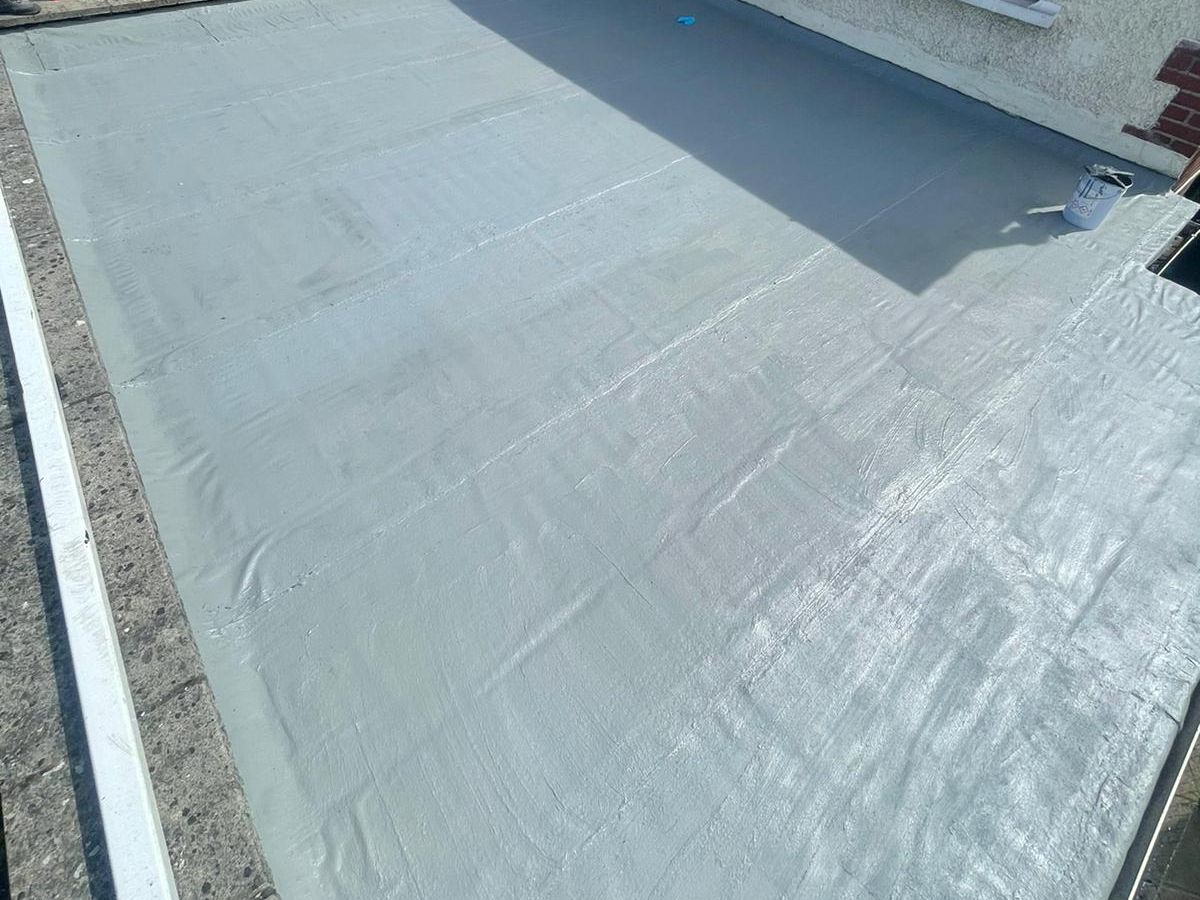
Flat roofs are a popular choice across Ireland for extensions, garages, commercial properties, and even modern homes. While they offer a sleek, practical solution, they do require specialist maintenance and repairs to remain effective and watertight. In this article, we explore the common issues flat roofs face in Ireland and the solutions available, including fibreglass, torch-on felt, and liquid waterproofing systems like Lava 20. Why Flat Roofs Need Extra Care. Unlike pitched roofs, flat roofs have a minimal slope, which makes them more susceptible to water pooling, moss build-up, and long-term wear. If not maintained, water can find its way through even small cracks or seams, leading to internal damage. Common Flat Roofing Problems. Standing water due to poor drainage or sagging Cracks or splits in the surface from age or temperature changes Loose or bubbled felt from poor installation or water ingress Flashing failure at wall joints or chimney bases Types of Flat Roof Coverings. Torch-On Felt Roofing. A cost-effective and long-lasting solution. Applied using heat to bond bitumen felt to the roof surface. Lasts 15–20 years with proper care. Fibreglass (GRP) Roofing. Durable and seamless, fibreglass roofs resist cracking and weathering. Perfect for long-term waterproofing. Liquid Waterproofing Systems (e.g. Lava 20). These modern solutions are cold-applied, flexible, and ideal for roofs with tricky shapes or details. Lava 20 is widely used for its long-term protection and fast curing. Professional Flat Roof Repairs. Whether you need patch repairs or a full flat roof replacement, we offer expert flat roofing services. We assess the condition, advise on the best solution for your budget and needs, and carry out all work to the highest standard.
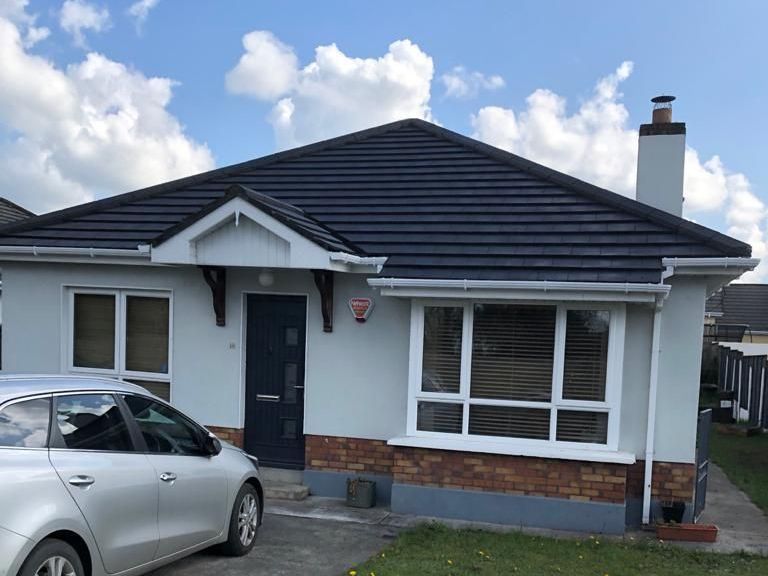
Proper roof maintenance is essential for keeping your home protected and your repair costs down. In Ireland, where we experience frequent rain, strong winds, and cold snaps, your roof is constantly exposed to the elements. Preventative care goes a long way in avoiding unexpected expenses. Why Maintenance Matters Regular maintenance helps: Extend the lifespan of your roof Prevent water leaks and structural damage Keep your home energy-efficient Preserve your property's value Key Maintenance Tips Inspect your roof twice a year. Spring and autumn are ideal times to check for damage, especially after storms or harsh weather. Clear moss and debris. Moss retains moisture and adds weight. Debris can cause blockages in gutters and downpipes. Check for cracked tiles or loose flashing. These small issues can let water in and quickly escalate. Inspect the attic. Signs of moisture, mould, or daylight through the roof boards mean you may have a leak. Keep gutters clean. Blocked gutters can cause water to back up under roof tiles and onto fascia boards. Hire a Professional Roofing Contractor. A professional roofer can spot early signs of trouble that might be invisible to the untrained eye. Patrick Hannifin Roofing offers full maintenance inspections and repairs across Ireland to keep your roof in excellent condition.
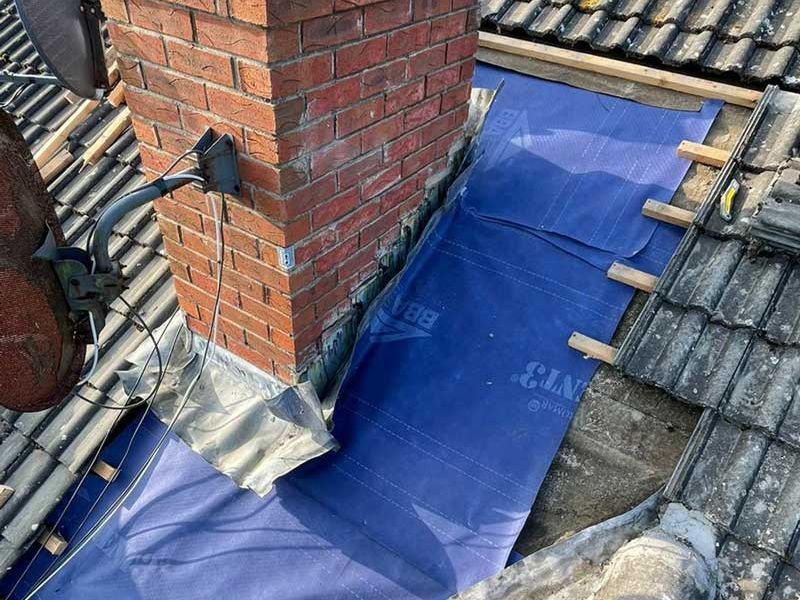
Roof leaks can cause major headaches for homeowners, especially when left untreated. In Ireland, where rain is a regular occurrence, even a small leak can quickly turn into a serious issue. Understanding what causes roof leaks and how to resolve them can help you act fast and prevent extensive damage. Top Causes of Roof Leaks in Ireland. Broken or slipped tiles. One of the most common causes. Strong winds or old age can shift or crack tiles, allowing rainwater to penetrate the underlay. Cracked flashing. Flashing seals joints around chimneys, vents, and skylights. Over time, it can corrode or lift, breaking the waterproof seal. Clogged gutters. If gutters are blocked, water can back up under the roof edge and seep into your home, especially during heavy downpours. Ageing roof materials. Even well-installed roofs degrade over time. Felt, tiles, and ridge caps can all deteriorate, especially after two or three decades of exposure. Poor workmanship. Leaks often occur at joints or junctions where poor installation failed to create a proper seal. How to Spot a Leak Early Watch out for: Water stains on ceilings or walls Damp smells in the attic Dripping sounds during rain Peeling paint or discolouration Temporary Fixes vs Permanent Repairs. While placing a bucket under the drip or patching the area with a waterproof sheet can provide temporary relief, the real solution lies in proper repairs. At Patrick Hannifin Roofing, we identify the source of the leak and repair it properly—whether it’s tile replacement, flashing work, or underlay replacement.

When it comes to repairing or replacing your roof, choosing the right contractor is one of the most important decisions you’ll make. A roof is one of the biggest investments in any property, and a poorly done job can lead to costly problems down the line. With so many roofing companies advertising their services, how can you ensure you're hiring a trusted professional? In this guide, we’ll explain what to look for when choosing a roofing contractor in Ireland, questions to ask, and red flags to avoid. Why Your Choice of Roofer Matters. A quality roofing contractor will not only complete the job correctly but also ensure it lasts. Good workmanship protects your home from the elements, saves you money in future repairs, and adds value to your property. Key Qualities of a Reliable Roofing Contractor. Look for these traits when researching local roofing contractors: Experience and reputation: A well-established business with years of experience and positive reviews is a strong sign of reliability. Insurance and certification: Your contractor should have public liability insurance and be fully compliant with health and safety standards. Written quotes and contracts: Everything should be documented clearly, including timelines, materials, and guarantees. Local references: Check online testimonials or ask for case studies from previous Irish clients. Questions to Ask Before Hiring. Don’t be afraid to ask direct questions: How long have you been in business? Can you provide proof of insurance? What type of roofing work do you specialise in? Do you offer guarantees on your work? What’s your lead time and how long will the job take? Avoiding Common Pitfalls. Be cautious of contractors who: Ask for large cash payments upfront Refuse to put anything in writing Can’t provide a business address or landline number Offer an unusually low quote—if it sounds too good to be true, it probably is Trust Patrick Hannifin Roofing We’ve built a strong reputation across Ireland for providing professional roofing and guttering services. We are fully insured, experienced, and committed to quality craftsmanship on every job—big or small.
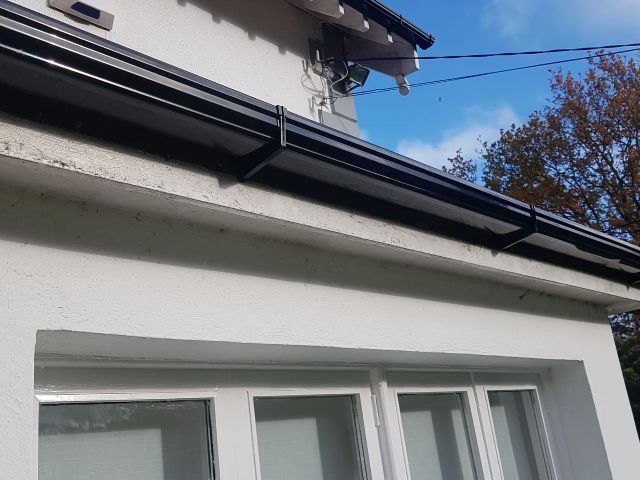
Your gutters play a more important role in protecting your home than you might think. While they’re easy to overlook, well-maintained gutters help direct rainwater safely away from your property, preventing costly damage to your roof, walls, foundation, and even your internal structure. In Ireland, where rainfall is frequent and often heavy, blocked or damaged gutters are one of the most common causes of water ingress and property deterioration. In this article, we’ll explore why regular gutter maintenance should be a top priority for homeowners and what happens when you ignore it. The Role Gutters Play in Roof and Home Protection. Gutters are part of your roofline system, working alongside fascia and soffits to control the flow of water off your roof and away from your home. When gutters are clear and functioning properly, they: Prevent water from pooling on your roof and causing leaks. Stop water from spilling over and soaking into your walls. Protect your home’s foundation from water build-up and erosion. Reduce the risk of damp, mould, and rot inside the property. Help preserve external paintwork and finishes. A simple blockage or loose joint can interrupt this process and cause a domino effect of water-related damage—especially in Irish weather. Common Gutter Problems We See Across Ireland. At Patrick Hannifin Roofing, we carry out gutter repairs and maintenance across Ireland and often come across the same recurring problems: Blocked gutters and downpipes. Leaves, moss, twigs, and other debris can build up in gutters and downpipes, stopping water from flowing properly. This can result in overflow during rain, which damages your fascia, soffits, and external walls. Sagging or detached gutters. Over time, brackets can loosen, or gutters can sag under the weight of trapped water and debris. This leads to inefficient drainage and strain on your roofline. Cracked or leaking joints. Joints between gutter sections can deteriorate or come apart, especially after freezing weather. These leaks can go unnoticed until interior damp patches appear. Poor gutter alignment. If your guttering was not installed with the correct fall or pitch, water can pool rather than drain away, causing long-term wear and tear. Animal nests or moss build-up Birds and rodents sometimes nest in guttering, especially in more rural parts of Ireland. Moss growth can also spread from your roof into your gutters, accelerating blockages. Why You Shouldn’t Delay Gutter Cleaning or Repairs. Ignoring a gutter issue doesn’t just impact the guttering itself—it affects your entire property. Overflows can saturate external walls and lead to internal damp. Over time, water damage can rot timber frames, weaken insulation, and even affect your home’s structural integrity. What starts as a small blockage could lead to: Roof leaks or timber rot Mould growth on interior walls Paint and plaster damage Foundation cracks and subsidence Pest infestations drawn by moisture Regular maintenance avoids these risks and extends the lifespan of both your guttering and your roof. How Often Should Gutters Be Cleaned in Ireland? Given Ireland’s wet climate and leaf-heavy seasons, we recommend gutter cleaning and inspection at least twice a year—once in spring and again in autumn. More frequent checks may be needed if your property is surrounded by trees or prone to moss build-up. After heavy storms or wind, it's always worth checking for: Loose brackets Overflow marks on walls Visible debris in gutters Sagging or detached sections A quick visual inspection from ground level is often enough to spot early issues. For a safe and thorough clean, always hire a professional with the right equipment and insurance. Our Professional Gutter Maintenance Services. At Patrick Hannifin Roofing, we offer comprehensive gutter maintenance services for homes across Ireland. Whether it’s a one-off clean, a scheduled annual service, or emergency gutter repairs, we’ve got you covered. Our service includes: Full inspection of gutters, fascia, and soffits Safe removal of all debris Flushing downpipes and outlets Repairing cracked joints or sagging sections Advising on any structural issues that need attention We also carry out fascia and soffit repairs, as these components are often damaged by poorly maintained guttering. Preventative Roofline Maintenance Saves Money. As with most home maintenance, prevention is far more affordable than repair. A routine gutter clean costs far less than fixing interior damp or replacing rotten roofline timber. By keeping your gutters in good condition, you: Avoid costly emergency repairs Protect your roof and external walls Improve drainage and reduce moisture risk Add value to your home

Roofing emergencies rarely happen at a convenient time. A sudden storm, falling tree branch, or years of unnoticed wear can result in immediate and serious damage to your roof. When water is pouring in or parts of the roof are missing, swift action is vital to prevent long-term structural issues, internal water damage, and costly repairs. In this guide, we’ll walk you through everything you need to know about emergency roof repairs in Ireland—from what qualifies as a roofing emergency, to how to respond, and how to choose a reliable roofing contractor when time is of the essence. What Counts as a Roofing Emergency? Not every roofing issue requires urgent attention, but some problems simply can’t wait. These situations demand emergency roofing services: Major leaks or water ingress. If water is pouring into your home during heavy rain or pooling in the attic, the damage will escalate quickly. Left untreated, it can soak insulation, short electrical wiring, and cause mould or structural decay. Storm damage or high winds. Ireland’s frequent storms can rip off tiles, dislodge flashing, or damage the entire roof surface. In some cases, falling debris like branches or even powerlines can puncture the roof. Collapsed sections of roofing. Partial collapse is rare but possible with age-weakened structures or after extensive water damage. This is a major emergency that requires immediate attention. Chimney or flashing failure. If flashing around your chimney or skylight has lifted, it can allow significant water ingress. In high winds, loose chimney bricks or cowls can even become hazardous. Fire damage or structural compromise. Roofs affected by fire may look stable but could be severely weakened underneath. Emergency repairs can help secure the area while permanent work is planned. First Steps in a Roofing Emergency. If you notice serious damage, stay calm and follow these initial steps: Protect the interior: Use buckets, towels, or tarpaulin to limit interior water damage if safe to do so. Do not climb onto the roof: It may be unstable and dangerous. Leave all inspections to the professionals. Call a trusted emergency roofer: Choose a reputable local roofing contractor who offers rapid-response services. Document the damage: Take photos for insurance purposes if safe. This can speed up the claims process. Choosing the Right Roofing Contractor in an Emergency. Time is crucial in an emergency, but don’t rush into hiring just anyone. A few key tips: Look for established local roofers with emergency callout services. Make sure they are fully insured and certified. Check for online reviews or ask for references. Avoid anyone demanding cash upfront or offering “cheap quick fixes”. At Patrick Hannifin Roofing, we provide fast, reliable emergency roof repairs across Ireland. Whether it’s storm damage, a sudden leak, or chimney failure, we act quickly to secure the site, minimise further damage, and carry out long-term repairs once the roof is stabilised. What to Expect From an Emergency Roof Repair Visit. When you call for emergency roofing services, our priority is to make your home safe and watertight. A typical visit involves: A fast response time—usually same-day depending on location and weather. A full assessment of the visible damage. Temporary repairs if needed—such as tarping exposed areas or sealing leaks. A follow-up plan for permanent repairs, which may be scheduled for better weather conditions or after structural inspection. Preventing Future Roofing Emergencies. While not all emergencies can be avoided, regular roof maintenance goes a long way. Many emergency roof repairs we attend could have been prevented with an annual inspection or timely minor repair. Consider booking in a roof inspection service once or twice a year, especially after storms or before winter sets in. Addressing small issues early prevents larger, urgent ones later. Insurance and Roofing Emergencies. In many cases, home insurance policies will cover storm damage, fallen trees, and emergency roof repairs. However, policies often require that you act quickly to minimise the damage. Using a professional roofer with experience in providing insurance reports can make the process much smoother. We’re happy to liaise directly with your insurance company to provide detailed quotes, damage assessments, and photo evidence where required.

Your roof works hard year-round to protect your home or business from the elements, yet it’s often out of sight and out of mind—until something goes wrong. In Ireland’s ever-changing climate, roof damage can happen slowly over time or suddenly during a heavy downpour or storm. The key to avoiding expensive emergency roof repairs is to identify signs of damage early and act before the problem worsens. In this post, we’ll show you how to spot the warning signs of roof issues, what to look out for both inside and outside your property, and when to call in a professional roofing contractor to carry out repairs or maintenance. The Silent Threat of Hidden Roof Damage. Not all roofing issues are immediately obvious. A small leak today can lead to rotten timbers, mould growth, or even structural damage if left unattended. That’s why regular roof inspections and preventative maintenance are so important. Whether you’re living in an older home or a newer build, the risk of wear and tear is inevitable. Knowing what to look for can save you thousands in the long run. Signs of Roof Damage You Can Spot From the Ground. You don’t need to climb a ladder to notice some of the most common signs of roofing problems. From the safety of the ground, keep an eye out for: Missing or slipped tiles. Strong winds or age-related wear can dislodge roof tiles. Even a single missing tile can allow water to seep in and damage the roof structure underneath. Sagging rooflines. If any part of your roof appears to be sagging or dipping, this could signal a structural issue, such as rotting timbers or excessive weight from water build-up. Moss and algae growth. A build-up of moss on roof tiles can trap moisture and lead to tile degradation over time. While common in damp climates like Ireland, excessive moss should be removed professionally. Damaged flashing or seals. The flashing around chimneys, vents, and skylights plays a vital role in keeping water out. Cracks, rust, or peeling around these areas is a common cause of leaks. Overflowing or blocked gutters. If gutters are clogged with debris, water can back up onto the roofline, damaging fascia boards, soffits, and eventually the roof decking itself. Interior Signs of a Roof Problem. Some of the earliest signs of roof damage are actually visible from inside the property. Be on the lookout for: Damp patches or stains on ceilings and walls. These could point to a leak in the roof that’s allowing water to seep into your attic or ceiling space. Peeling paint or bubbling plaster. Water ingress from a damaged roof often shows up as bubbling paint or plaster around upper walls or ceiling corners. Musty odours or visible mould in the attic. If your attic smells musty or you see mould, this could indicate poor ventilation or a hidden leak in the roofing membrane. Light entering the attic. If you can see daylight through your roof boards, you have a gap somewhere that needs immediate attention. Seasonal Checks Are Key. In Ireland, we recommend roof inspections at least twice a year—ideally in the spring and autumn. Winter storms, frost, and heavy rainfall can take a toll, and spotting damage early means you can schedule roof repairs before more extensive harm occurs. A professional roofing contractor can inspect areas that are unsafe or inaccessible to the average homeowner and provide a full condition report. DIY vs Professional Roofing Inspections. While it’s helpful to know the signs of roof damage, it’s always safer and more thorough to hire a qualified roofing specialist to carry out regular checks. At Patrick Hannifin Roofing, we offer full roof inspections across Ireland and can provide expert advice on whether repairs, maintenance, or replacement work is needed. We handle everything from minor leak repairs to full roof restorations. Don't Wait for a Leak to Take Action. It’s easy to ignore a small issue when it doesn’t appear to be causing a problem. But by the time water starts dripping from your ceiling, the damage could already be extensive—and expensive. Whether you’ve noticed something unusual or just want peace of mind, scheduling a professional inspection now can save you stress and money down the line.

